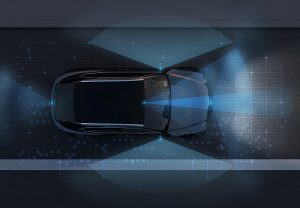 It’s an inevitable part of the future of automobile technology. Many new and upcoming vehicle models will be equipped with a slew of safety features. While these features can be crucial when it comes to reducing traffic accidents caused by human error, they can also have unintended – and potentially dangerous – consequences.
It’s an inevitable part of the future of automobile technology. Many new and upcoming vehicle models will be equipped with a slew of safety features. While these features can be crucial when it comes to reducing traffic accidents caused by human error, they can also have unintended – and potentially dangerous – consequences.
Pros & cons of emerging safety features
According to the Insurance Institute for Highway Safety (IIHS), two emerging safety features have been tested by engineers. These include:
- Adaptive cruise control: This feature is designed to prevent rear-end collisions by keeping a safe distance behind a leading vehicle and detect when a vehicle is about to stop.
- Active lane-keeping: This feature helps to prevent drivers from veering out of lanes. This is especially helpful when navigating roads with frequent curves.
While these features sound promising, systems can malfunction. Adaptive cruise control was tested in four different scenarios: when the leading vehicle slowed down, when the leading vehicle braked abruptly, when the leading vehicle stopped and accelerated, and when the leading vehicle switched lanes. While the feature worked the majority of the time, there were a few instances when it failed to react.
Active lane-keeping was tested on curves and hills. While it proved to be effective most of the time, on a few occasions, the test driver had to override the steering assistance feature to keep the vehicle in its lane.
The primary risk posed by these safety features is distracted driving. If drivers become too comfortable and reliant on this technology, they may be more likely to take their eyes and attention off the road.
In an Esurance survey, many motorists who drove vehicles with semi-autonomous features admitted to being distracted:
- Often or sometimes distracted: 21 percent of respondents
- Occasionally distracted: 43 percent of respondents
- Rarely distracted: 36 percent of respondents
By comparison, motorists who drove vehicles without semi-autonomous features showed significantly lower rates of distracted driving:
- Often or sometimes distracted: 16 percent of respondents
- Occasionally distracted: 39 percent of respondents
- Rarely distracted: 45 percent of respondents
Human error still a factor
Emerging safety technology is only intended to mitigate human error, not eliminate it entirely. Even state-of-the-art safety features can malfunction from time to time. That’s why drivers are expected to uphold their duty of care and keep their attention focused on the road ahead.
If you or a loved one was injured in an auto accident caused by a distracted driver, it’s important that you know your rights. You could face months of physical therapy while unable to work and collect a paycheck. Additionally, your medical bills can pile up fast.
An experienced attorney Szantho Law Firm will fight to maximize your compensation, so you can focus on your recovery. Contact us today to discuss your options.
